Welcome to our free classical music site

Do you write about classical music? Are you a blogger? Want to team up with Classical Connect? Send us a message, let's talk!

Do you write about classical music? Are you a blogger? Want to team up with Classical Connect? Send us a message, let's talk!
March 28, 2016. Haydn’s “The Severn Last Words of Christ.” March 31st is the birthday of Franz Joseph Haydn and yesterday was Easter, so we thought it would be appropriate to bring the two together. Haydn was born in 1732 on Rohrau in eastern Austria. He had a difficult childhood,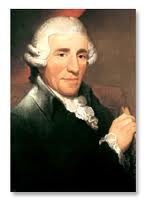 part of which he spent with a relative, in poverty and hunger. A good voice brought him to Vienna, where at the age of seven he became a chorister at the St. Stephen Cathedral. That lasted till the age of 17 when he lost his soprano voice (it’s said that the empress Maria Theresa herself started complaining about his singing). During the next several years he earned his living as a freelancing music teacher, accompanist, organ player, and a composer. In 1757 he found a permanent job, the first one in his life, as Kapellmeister with Count Morzin in Vienna. He was let go in 1760 (the Count was having financial problems) but was immediately hired by the Esterházy, one of the wealthiest and most prominent families in the empire. He worked for the Esterházys for the next 30 years.
part of which he spent with a relative, in poverty and hunger. A good voice brought him to Vienna, where at the age of seven he became a chorister at the St. Stephen Cathedral. That lasted till the age of 17 when he lost his soprano voice (it’s said that the empress Maria Theresa herself started complaining about his singing). During the next several years he earned his living as a freelancing music teacher, accompanist, organ player, and a composer. In 1757 he found a permanent job, the first one in his life, as Kapellmeister with Count Morzin in Vienna. He was let go in 1760 (the Count was having financial problems) but was immediately hired by the Esterházy, one of the wealthiest and most prominent families in the empire. He worked for the Esterházys for the next 30 years.
Even though Haydn was spending most of his time in the different estates of the Esterházy (and longing to return to Vienna), his musical fame was spreading around Europe, especially after 1779, when Prince Nikolaus allowed Haydn to sell his compositions to publishers. Commissions followed, mostly from Paris and London. An unusual commission arrived in 1783 from Spain. Oratorio de la Santa Cueva, a church in Cadiz, asked for a series of orchestral pieces set to the last words of Christ. They were to be performed on Good Friday. Haydn called the sections “Sonatas” and described them as “lasting seven or eight minutes, together with an opening introduction and concluding with a Terremoto or Earthquake.” The bishop was supposed to deliver “discourses” on each of the words, with music in between them. Haydn commented on the difficulties he encountered in confining himself to the allotted time and writing so much music without “fatiguing the listeners.” The end result was clearly to Haydn’s liking: he called “Seven Last Words” his most successful composition. The score was published and performed in Paris in 1787; and then in Berlin and Vienna. Also in 1787, Haydn adapted “Seven Last Words” for a string quartet; this is the version that is performed more often these days. The Vermeer Quartet made it its own. It played it all over the world and made a recording with Dr. Martin Luther King reading the introduction and Billy Graham and several other religious leader commenting on each section. In 1796, the Austrian composer Joseph Friebert, who at the time was the Kapellmeister in Passau, created a choral version of the “Seven Last Words.” Haydn heard it, was impressed but decided to improve it, preparing his own version. It became an oratorio, the first of the three Haydn ever wrote (The Creation and The Seasons were composed in the next two years).
We’ll hear the Introduction, Sonata II ("Today shalt thou be with me in paradise"), Sonata VIː ("It is finished") and the final Earthquake. Le Concert des Nations is conducted by Jordi Savall.Permalink
March 21, 2016. Bach. Today is the birthday of Johann Sebastian Bach. He was born in 1685 in Eisenach, the city we mentioned last week while celebrating Bach’s friend, Georg Philipp Telemann. Last year we wrote about Bach’s life around 1723-1724, as he arrived in Leipzig, after spending 6 years in Köthen. Bach was going to assume the duties of the Kantor at Thomaskirche, the post that was left open with the death of Johann Kuhnau, the previous Kantor and Telemann’s nemesis, a year earlier. This was a prestigious position: the Kantor was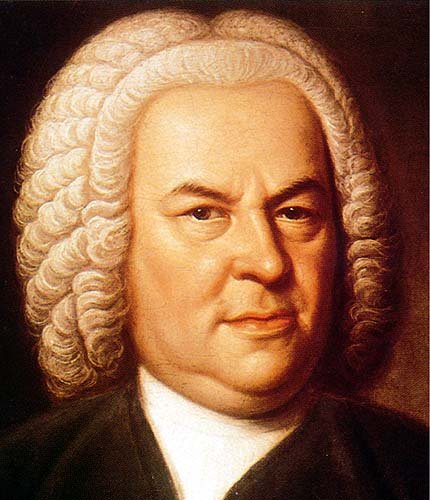 practically the director of church music for the whole city. During the previous years Bach had changed employers several times, moving from one place to another, but he would remain in Leipzig for the rest of his life. Last year we mentioned (and played) the St. John Passion, one of his early Leipzig masterpieces. Bach wrote it in 1723-1724; it was first performed during the Good Friday service on April 7th, 1724, at Nikolaikirche, one of the most important churches in Leipzig, second only to Thomaskirche. Bach’s workload was enormous. First of all, he was supposed to teach music to the students at Thomasschule, one of the oldest schools in Europe: it was founded in 1212, together with Thomaskirche. The school was located in the courtyard of the church and was extended during Bach’s tenure (the old building was demolished in 1903, a pity). There were 50 to 60 students, split into four choirs. Each choir performed in a different church, and each had its own musical curriculum. Bach was also supposed to teach Latin but was allowed to employ substitutes.
practically the director of church music for the whole city. During the previous years Bach had changed employers several times, moving from one place to another, but he would remain in Leipzig for the rest of his life. Last year we mentioned (and played) the St. John Passion, one of his early Leipzig masterpieces. Bach wrote it in 1723-1724; it was first performed during the Good Friday service on April 7th, 1724, at Nikolaikirche, one of the most important churches in Leipzig, second only to Thomaskirche. Bach’s workload was enormous. First of all, he was supposed to teach music to the students at Thomasschule, one of the oldest schools in Europe: it was founded in 1212, together with Thomaskirche. The school was located in the courtyard of the church and was extended during Bach’s tenure (the old building was demolished in 1903, a pity). There were 50 to 60 students, split into four choirs. Each choir performed in a different church, and each had its own musical curriculum. Bach was also supposed to teach Latin but was allowed to employ substitutes.
In addition to teaching, Bach was required to compose music for the services at the main churches of Leipzig: a cantata for each Sunday service and for every holiday. In Leipzig, Bach composed five annual cycles, about 60 cantatas each (altogether Bach wrote almost 300 cantatas; of these, 200 are extant and about 100 were lost). Most of the Leipzig cantatas were written during his first years as Thomaskantor, the last one – around 1745. Cantatas were written for vocal soloists (usually four of them- soprano, alto, tenor and bass, but sometimes just for one vocal solo), who were supported by the Thomanerchor (the choir of the St. Thomas School), and the orchestra. The choral part was usually written for four voices, and there were four singers per group – 16 choristers altogether. Bach himself lead the performances and played the organ. The soprano solo very often was Anna Magdalena, his young second wife.
With such an extraordinary workload, it’s not surprising that Bach reused some of the material from his previous work, as he would later use some of the cantata material in his Oratorios (Easter and Christmas). Out of the 300 cantatas it is impossible to find the “better” ones or even a favorite, so “Vergnügte Ruh, beliebte Seelenlust” BWV 170, as great as it is, is neither. “Delightful rest, beloved pleasure of the soul,” as it is translated from German, was composed in 1726 for the sixth Sunday after the Trinity. It was first performed on July 28th of that year. This is a rather unusual cantata as it’s composed for a solo voice, an alto. Sometimes it’s performed by a countertenor, sometimes by a mezzo-soprano. In this recording it’s the former, Andreas Scholl. Collegium Vocale is conducted by Philippe Herreweghe. And here’s a more mature (and more famous) cantata Wachet auf, ruft uns die Stimme, BWV 140 for four voices. The first line is usually translated as “Awake, calls the voice to us.” Bach later transcribed the fourth movement, chorale: "Zion hört die Wächter singen" for the organ (BWV 645). This chorale was further transcribed for the piano by Ferruccio Busoni and several other composers. The original cantata is performed by the soloists and Concentus musicus Wien and conducted by Nikolaus Harnoncourt. Harnoncour, one of the pioneers of “historically informed” performances, died earlier this month, on March 5th. He was 86.Permalink
March 14, 2016. Telemann. Georg Philipp Telemann was born on this day in 1681, four years and a week before Johann Sebastian Bach. Telemann was born in Magdeburg; his family was upper-middle class, his father, who died when Telemann was four, was a deacon and university educated. Telemann started musical lessons rather late, at the age of 10, and even those were brief. His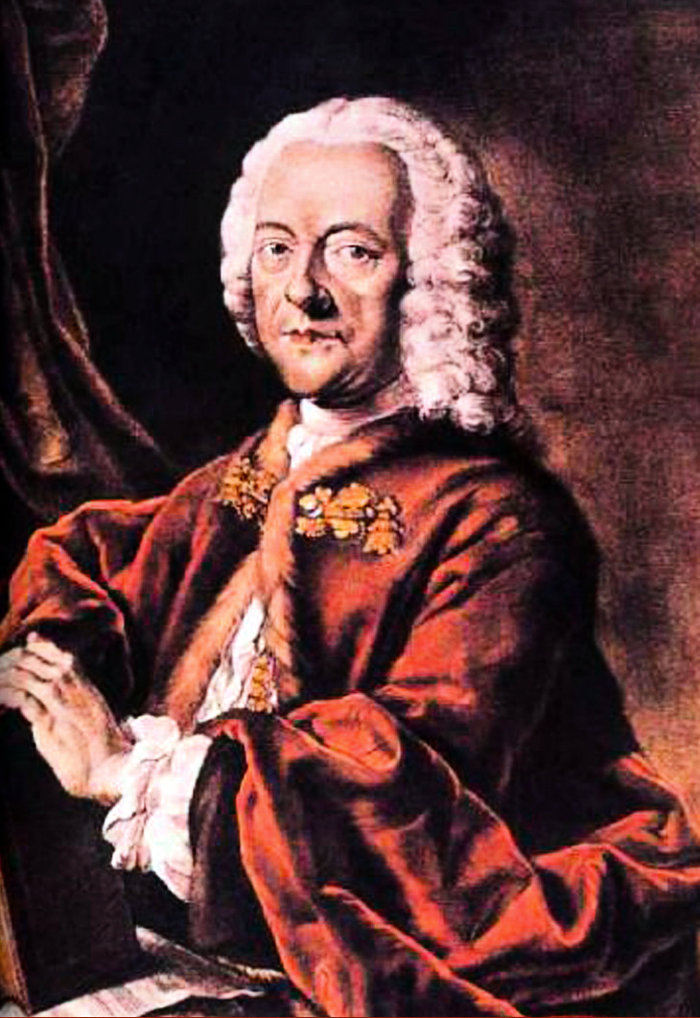 family was not supportive and young Telemann studied in secret, learning to play the recorder, violin, and zither. Upon learning that he continued studying music, his mother confiscated all his instruments. That didn’t stop Telemann from composing. He’d even sneak out of his house at night and play on borrowed instruments. When he was 13, he was sent to school in Zellerfeld, but his main teacher there was interested in music himself and in addition to general subjects introduced Telemann to the relationship between music and mathematics. In 1697 Telemann joined the old and prestigious Gymnasium Andreanum in Hildesheim. (The school was established in 1225, and the town, especially its Market square, was considered one of the most beautiful in all of Germany. It was bombed out during WWII but restored in the 1990s). His musical talents became obvious and acknowledged; the school commissioned him songs, and he also performed in local churches. He even traveled to the courts in nearby Hanover and Brunswick, where he became familiar with Italian music, Corelli and Caldara in particular. All these extracurricular activities didn’t prevent Telemann from graduating third in a class of 150.
family was not supportive and young Telemann studied in secret, learning to play the recorder, violin, and zither. Upon learning that he continued studying music, his mother confiscated all his instruments. That didn’t stop Telemann from composing. He’d even sneak out of his house at night and play on borrowed instruments. When he was 13, he was sent to school in Zellerfeld, but his main teacher there was interested in music himself and in addition to general subjects introduced Telemann to the relationship between music and mathematics. In 1697 Telemann joined the old and prestigious Gymnasium Andreanum in Hildesheim. (The school was established in 1225, and the town, especially its Market square, was considered one of the most beautiful in all of Germany. It was bombed out during WWII but restored in the 1990s). His musical talents became obvious and acknowledged; the school commissioned him songs, and he also performed in local churches. He even traveled to the courts in nearby Hanover and Brunswick, where he became familiar with Italian music, Corelli and Caldara in particular. All these extracurricular activities didn’t prevent Telemann from graduating third in a class of 150.
In 1701 Telemann entered Leipzig University. Even though his intention was to study law, very soon he found himself composing and performing full time. The Mayor commissioned him to write music for two of the most prestigious churches in the city, the Thomaskirche and the Nikolaikirche (twenty years later these churches would be filled with the of music of Bach). Telemann founded a student orchestra and one year later, in 1702, became the director of the opera house, for which he composed four operas. Johann Kuhnau, a prominent composer, was then the Cantor at the Thomaskirche, traditionally the position of the city’s music director, the one that Bach would assume in 1723. With all of Telemann’s music activities encroaching on Kuhnau’s authority, it was not long before their relationship turned acrimonious. Kuhnau was especially incensed by Telemann using students in opera productions and petitioned city fathers to stop the practice (apparently with little success). It’s interesting that Telemann wasn’t shy to acknowledge that he learned much from studying Kuhnau’s music. Also around that time, Telemann met Handel in Halle and heard an opera by Bononcini, Handel’s future rival, during a trip to Berlin.
In 1705 Telemann left Leipzig for Sorau (now in Poland), where Count Erdmann II, a great lover of music, had just returned from his travels to Italy and France. Telemann assumed the position of Kapellmeister and, to satisfy the Count’s newly acquired French taste, engaged in studying the music of Lully. His stay in Sorau was productive but not long: with the army of Swedish King Carl XII approaching, he left Sorau for Eisenach (Bach’s birthplace) and entered into the service of Duke Johann Wilhelm of Saxe-Eisenach as Kapelmeister. This is where, apparently, he met Johann Sebastian for the first time. Telemann’s output during his four years in Eisenach was prodigious: four or five cycles of church sonatas, masses, 50 cantatas, and many concertos for orchestra. This presents one of the problems with Telemann’s legacy: some of his music is of extremely high quality but it has to be searched for within his vast, ofter mediocre output. Here’s a cantata that’s definitely not: Seele, lerne dich erkennen, it was written around 1725. It’s performed by Ensemble Caprice with the soprano Monika Mauch, Matthias Maute conducting. Permalink
March 7, 2016. Gesualdo. Today is the birthday of Maurice Ravel, a perennial favorite of our listeners and performers (we have more than 130 recordings of Ravel in our library). Ravel was born in 1875. Here’s his Sonatine, which he wrote for a competition sponsored by the magazine Weekly Critical Review. The rules of the competition called for just the first movement of a piano Sonatine and stipulated that the movement should be no more than 75 bars long. Ravel’s was several bars longer, and even though he was the only entrant, he was disqualified. Soon after the magazine went bankrupt but, fortunately for us, two years later Ravel completed the piece. Sonatine is performed live by the young Russian pianist Denis Evstuhin.
Carl Philipp Emanuel Bach, the fifth son of Johann Sebastian Bach and the second oldest to survive into adulthood, was born on March 8th of 1714. He’s mostly famous for his symphonies and keyboard sonatas (Mozart said “Bach is the father, we are the children,” and he was referring to C.P.E., not J.S.). Bach also wrote several oratorios. Probably the most interesting one is Die Israeliten in der Wüste (The Israelites in the Desert), written in 1768-69. Even though it’s styled after Handel’s Messiah, it’s full of original and interesting music. Here’s the introductory chorus, it’s performed by the Stuttgart chamber chorus and orchestra, Frieder Bernius conducting.
The composer to whom we’d like to pay special attention today is Carlo Gesualdo. Gesualdo,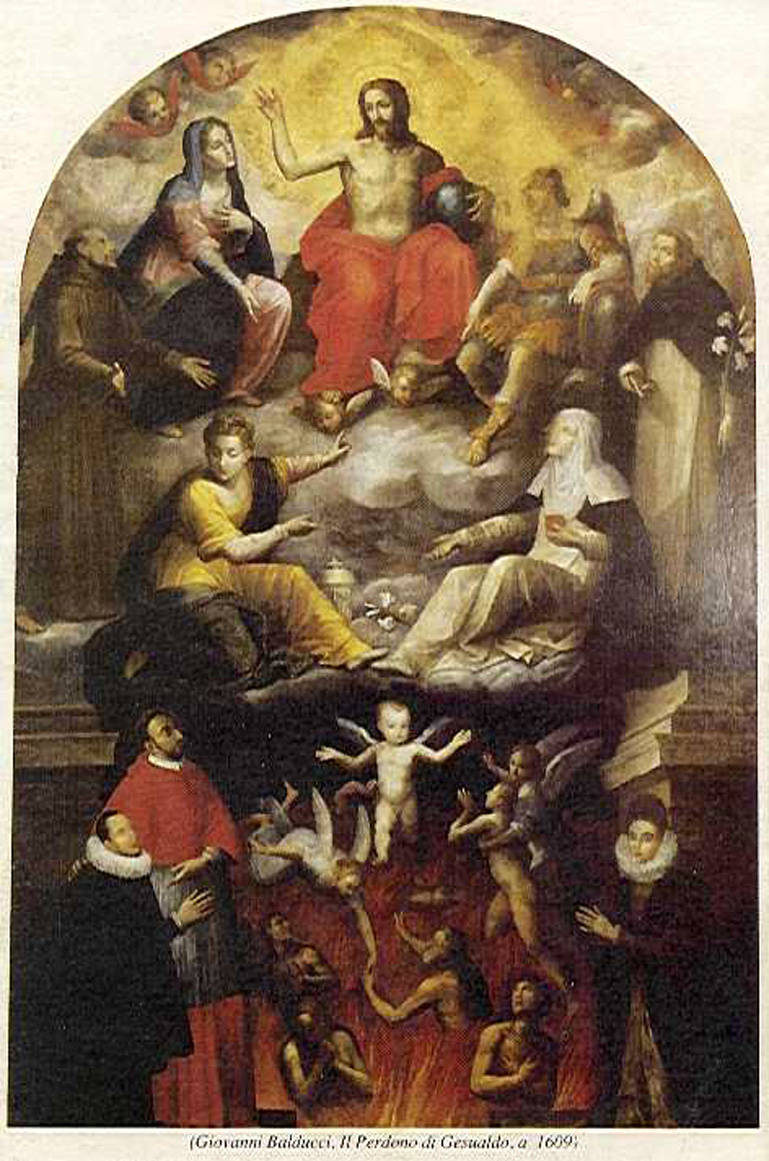 Prince of Venosa, Count of Conza, was born on March 8th of 1566. Even though the family castle was in Gesualdo, he was born in Venosa, then part of the kingdom of Naples and it was in that great city that he spent much of his time. In 1586 he married his cousin Maria d’Avalos, daughter of the Marquis of Pescara. Two years later Maria started an affair with Fabrizio Carafa, the Duke of Andria. In 1590, Gesualdo found Maria and her lover in flagrante, and killed them both on the spot. Such honor killings were customary, and the court found Gesualdo innocent. Still he decided to leave Naples and retired to Venosa. In 1594 he visited Ferrara, then one of the music centers of Italy. The Duke Alfonso II d'Este was a famous patron of the arts (Torquato Tasso spent several years at his court). During his visit Gesualdo arranged a marriage to Alfonso’s niece, Leonora d’Este. It seems Gesualdo was more interested in meeting the court composer Luzzasco Luzzaschi, one of the leading composers of the time, then his wife (the marriage was an unhappy one). After marrying Leonora, he sent her to his castle in Gesualdo while staying behind in Ferrara; he spent most of the next two years in the city. It was in Ferrara that Gesualdo published his first book of madrigals. On many occasions his contemporaries commented on Gesualdo’s obsessive passion for music. While first considered an amateur, Gesualdo soon acquired the reputation of a highly inventive composer, especially after publishing the third and fourth books of madrigals in 1594 and 1595. In his later years Gesaldo grew “melancholic” (today he would have probably been diagnosed with depression). He took a mistress who practiced witchcraft, stayed aloof and only kept the company of a few of his courtiers. But he continued to compose, creating some of the most extraordinary music. The last two books of madrigals, Books Five and Six appeared in 1611. We’ll hear two examples of Gesualdo’s chromatic inventiveness, both from Book Six: the first one, Se la mia morte brami (here) and Ancide sol la morte, no. 15 (here). They’re performed by Ensemble Métamorphoses under the direction of Maurice Bourbon.
Prince of Venosa, Count of Conza, was born on March 8th of 1566. Even though the family castle was in Gesualdo, he was born in Venosa, then part of the kingdom of Naples and it was in that great city that he spent much of his time. In 1586 he married his cousin Maria d’Avalos, daughter of the Marquis of Pescara. Two years later Maria started an affair with Fabrizio Carafa, the Duke of Andria. In 1590, Gesualdo found Maria and her lover in flagrante, and killed them both on the spot. Such honor killings were customary, and the court found Gesualdo innocent. Still he decided to leave Naples and retired to Venosa. In 1594 he visited Ferrara, then one of the music centers of Italy. The Duke Alfonso II d'Este was a famous patron of the arts (Torquato Tasso spent several years at his court). During his visit Gesualdo arranged a marriage to Alfonso’s niece, Leonora d’Este. It seems Gesualdo was more interested in meeting the court composer Luzzasco Luzzaschi, one of the leading composers of the time, then his wife (the marriage was an unhappy one). After marrying Leonora, he sent her to his castle in Gesualdo while staying behind in Ferrara; he spent most of the next two years in the city. It was in Ferrara that Gesualdo published his first book of madrigals. On many occasions his contemporaries commented on Gesualdo’s obsessive passion for music. While first considered an amateur, Gesualdo soon acquired the reputation of a highly inventive composer, especially after publishing the third and fourth books of madrigals in 1594 and 1595. In his later years Gesaldo grew “melancholic” (today he would have probably been diagnosed with depression). He took a mistress who practiced witchcraft, stayed aloof and only kept the company of a few of his courtiers. But he continued to compose, creating some of the most extraordinary music. The last two books of madrigals, Books Five and Six appeared in 1611. We’ll hear two examples of Gesualdo’s chromatic inventiveness, both from Book Six: the first one, Se la mia morte brami (here) and Ancide sol la morte, no. 15 (here). They’re performed by Ensemble Métamorphoses under the direction of Maurice Bourbon.
The picture by Giovanni Balducci, above, was commissioned by Gesualdo in 1609. It depicts, in the low row, him standing next to the Cardinal Carlo Borromeo, his uncle, who was to be canonized the following year, and Leonora on the far right.Permalink
February 29, 2016. Chopin, Rossini, Vivaldi. These are the composers born this week: Gioachino Rossini, the epitome of the bel canto – on February 29th of 1792, Frédéric Chopin, one of the greatest, if not the greatest Romantic composers – on March 1st of 1810, and Antonio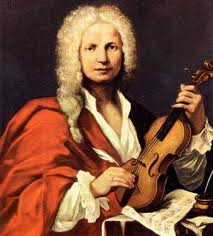 Vivaldi, who occupied a similar position within the Baroque tradition – on March 4th of 1678. We don’t have enough space to celebrate them all but omitting any one of them would be a fault, so we’ll be brief. Vivaldi, the oldest of the three, was born in Venice, one of the centers of European music. Vivaldi’s father, a barber-cum-violinist, was his first music teacher. At the age of 15 Antonio started his training for priesthood at local churches; he was ordained 10 years later. Vivaldi had health issues – probably asthma – and stopped celebrating Mass (and thus lost part of his income) several years into his priesthood. In 1703 Vivaldi became maestro di violino at Pio Ospedale della Pietà, a Venetian orphanage which specialized in the musical training of children in its care. It maintained a well-regarded orchestra and a choir. Musical services at the Pietà were popular among the Venetian nobility, and required continuous supply of new music, providing which was one of Vivaldi’s responsibilities. In 1711, Estienne Roger of Amsterdam published Vivadli’s set of 12 concerti, for one, two and four violins. It was called L'Estro Armonico, op. 3 and was dedicated to Grand Prince Ferdinand of Tuscany (the Prince, the son of Cosimo III de' Medici, Grand Duke of Tuscany, was a famous patron of music; among the musicians who benefited from his largess were Alessandro and Domenico Scarlatti, Benedetto Marcello, and George Frideric Handel). L'Estro Armonico was a huge success, especially in Germany, so much so that Bach transcribed six of the concertos: three for the keyboard, two for the organ and one, Concerto no 10, for four harpsichords and strings. Here’s the “original” Concerto no. 3, op. 3 for solo violin. The Academy of Ancient Music is led by Christopher Hogwood.
Vivaldi, who occupied a similar position within the Baroque tradition – on March 4th of 1678. We don’t have enough space to celebrate them all but omitting any one of them would be a fault, so we’ll be brief. Vivaldi, the oldest of the three, was born in Venice, one of the centers of European music. Vivaldi’s father, a barber-cum-violinist, was his first music teacher. At the age of 15 Antonio started his training for priesthood at local churches; he was ordained 10 years later. Vivaldi had health issues – probably asthma – and stopped celebrating Mass (and thus lost part of his income) several years into his priesthood. In 1703 Vivaldi became maestro di violino at Pio Ospedale della Pietà, a Venetian orphanage which specialized in the musical training of children in its care. It maintained a well-regarded orchestra and a choir. Musical services at the Pietà were popular among the Venetian nobility, and required continuous supply of new music, providing which was one of Vivaldi’s responsibilities. In 1711, Estienne Roger of Amsterdam published Vivadli’s set of 12 concerti, for one, two and four violins. It was called L'Estro Armonico, op. 3 and was dedicated to Grand Prince Ferdinand of Tuscany (the Prince, the son of Cosimo III de' Medici, Grand Duke of Tuscany, was a famous patron of music; among the musicians who benefited from his largess were Alessandro and Domenico Scarlatti, Benedetto Marcello, and George Frideric Handel). L'Estro Armonico was a huge success, especially in Germany, so much so that Bach transcribed six of the concertos: three for the keyboard, two for the organ and one, Concerto no 10, for four harpsichords and strings. Here’s the “original” Concerto no. 3, op. 3 for solo violin. The Academy of Ancient Music is led by Christopher Hogwood.
Gioachino Rossini composed 39 operas, among them some of the most beloved in all of the Italian repertoire, such as Il barbiere di Siviglia, La Cenerentola and William Tell. This achievement looks extraordinary if we consider that Rossini retired from active composing at the age of 37. Rossini didn’t “invent” bel canto, but he was the first, ahead of Bellini and Donizetti, to create great bel canto roles. The major exponents of the 18-century bel canto style were castrati; Farinelli was probably the most famous singer of the 18th century. It’s said that in 1720s and 1730s almost 4,000 pre-pubescent boys were castrated annually. By the early 19th century few of them remained on stage, but Rossini was greatly influenced by their singing. He said, “I have never forgotten them. The purity, the miraculous flexibility of those voices and, above all, their profoundly penetrating accent — all that moved and fascinated me more than I can tell.” He created a role for Giovanni Veluti, the "last of the great castrati," in his opera Aureliano in Palmira. Rossini’s wife, the famous soprano Isabella Colbran, shared the stage with Veluti in several productions. Colbran herself premiered many of Rossini’s operas, Semiramide, written in 1823 was one of them. Here’s is one of the greatest bel canto sopranos of the 20th century, Joan Sutherland, in the aria Bel raggio lusinghier in the 1960 production of Semiramide. The orchestra of the Covent Garden Opera is conducted by Francesco Molinari-Pradelli.
We’ll celebrate Chopin’s birthday by just one piece, and keeping with the theme of this post, it’s Italian in style. Barcarolle, op. 60 was written in 1846. His health was already deteriorating (Chopin died of tuberculosis on October 17th of 1849) and this was his last relatively large composition. He also played barcarolle in his last public concert in February of 1848 (it’s said that he was so weak that practically the whole concert was played in pianissimo). Here it is performed, with magnificent restraint, by Arthur Rubinstein. Permalink
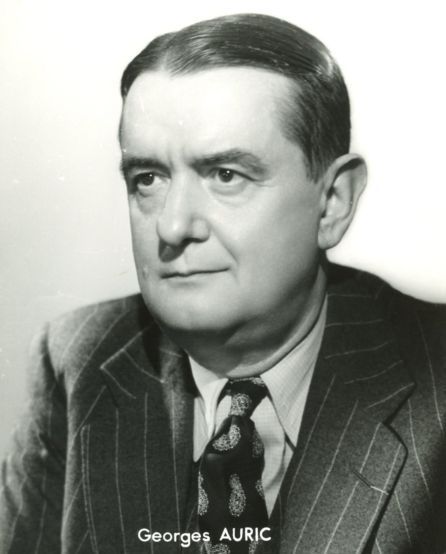 There are several other composers of note who have their birthdays around this date. One of them is the French composer and member of Les Six, Georges Auric. Auric was born in Lodève, a small town in the southwestern part of France, on February 15th of 1899. His family moved to the nearby Montpellier, where Auric attended the conservatory. He studied piano and was introduced to the music of Debussy, Ravel and Stravinsky. He also discovered the music of Satie, which later would become such an influence both on him and his friends. In 1913 his family moved Paris and Georges enter the Conservatory, where he studied with Florant Schmitt and Albert Roussel. When Georges was just 15, he got acquainted with many of the Parisian luminaries: Stravinsky, Apollinaire, Cocteau, Braque and Picasso. At the Conservatory, he met Arthur Honegger, Darius Milhaud and Germaine Tailleferre, all of whom eventually became associated with Les Six. (The group was the brain-child of Eric Satie, who wanted to organize musicians opposed to the music of Wagner and rebelled against the Impressionists. Satie came up with the idea after a concert in a private studio in Montparnasse in 1917. For that amazing concert, the walls were covered with pictures by Picasso, Matisse, Léger and Modigliani. The music that was performed was by Erik Satie himself, Honegger, Auric and Louis Durey). In the 1924, Serge Diagilev asked Auric to remake his incidental music to Molière’s comedy Les Fâcheux into a ballet. The ballet was successful and several other commissions followed, some from Diagilev, others from Ida Rubinstein. He also wrote music for several movies, including 1952 “Moulin Rouge,” with the song “Where is my heart,” which made it to no. 1 on the Billboard chart in 1953. But Auric remained a serious, probing composer throughout his career; in the 1960s and 1970s he even tried out serialism. Auric died on July 23rd of 1983. Here’s his Sonatine from 1922. It’s performed by the pianist Daniel Blumenthal.
There are several other composers of note who have their birthdays around this date. One of them is the French composer and member of Les Six, Georges Auric. Auric was born in Lodève, a small town in the southwestern part of France, on February 15th of 1899. His family moved to the nearby Montpellier, where Auric attended the conservatory. He studied piano and was introduced to the music of Debussy, Ravel and Stravinsky. He also discovered the music of Satie, which later would become such an influence both on him and his friends. In 1913 his family moved Paris and Georges enter the Conservatory, where he studied with Florant Schmitt and Albert Roussel. When Georges was just 15, he got acquainted with many of the Parisian luminaries: Stravinsky, Apollinaire, Cocteau, Braque and Picasso. At the Conservatory, he met Arthur Honegger, Darius Milhaud and Germaine Tailleferre, all of whom eventually became associated with Les Six. (The group was the brain-child of Eric Satie, who wanted to organize musicians opposed to the music of Wagner and rebelled against the Impressionists. Satie came up with the idea after a concert in a private studio in Montparnasse in 1917. For that amazing concert, the walls were covered with pictures by Picasso, Matisse, Léger and Modigliani. The music that was performed was by Erik Satie himself, Honegger, Auric and Louis Durey). In the 1924, Serge Diagilev asked Auric to remake his incidental music to Molière’s comedy Les Fâcheux into a ballet. The ballet was successful and several other commissions followed, some from Diagilev, others from Ida Rubinstein. He also wrote music for several movies, including 1952 “Moulin Rouge,” with the song “Where is my heart,” which made it to no. 1 on the Billboard chart in 1953. But Auric remained a serious, probing composer throughout his career; in the 1960s and 1970s he even tried out serialism. Auric died on July 23rd of 1983. Here’s his Sonatine from 1922. It’s performed by the pianist Daniel Blumenthal.
February 22, 2016. Auiric and Kurtág. By any count this should’ve been the week of George Frideric Handel, who was born on 23rd of February in 1685, but we’ve written about him many times (here and here, for example), so today we’ll mark his anniversary by playing the aria Ombra mai fu from his opera Xerxes. The magnificent Cecilia Bartoli is accompanied by Il Giardino Armonico, Giovanni Antonini conducting.
We’d also like to mention another 20th century composer, the Hungarian György Kurtág, who was born on February 19th of 1926 in Lugoj, Banat. These days most of the historical Banat lies in Romania, but prior to 1918 Banat was part of the Austro-Hungarian empire; many inhabitants were Hungarian-speakers. It also had a large Jewish population; Kurtág is half-Jewish. He spoke Hungarian at home and Romanian at school. As a child, he studied the piano on and off, first with his mother, then with professional teachers. After WWII, in 1946, the 20-year old Kurtág moved to Budapest and continued taking piano lessons, eventually entering the Franz Liszt Music Academy. There he met György Ligeti and they became friends for life. After the Hungarian revolution of 1956, Kurtág moved to Paris. There he studied with Olivier Messiaen and Darius Milhaud. He returned to Hungary in 1959 and stayed there for the duration of the Communist regime – the only Hungarian composer of international renown to do so (Ligeti, for example, fled to Vienna right after the failed revolution and stayed in the West for the rest of his life). Kurtág resumed traveling only after the fall of communism in 1989, moving first to Berlin (he was the composer in residence for the Berlin Philharmonic in the mid-90s), then Vienna, the Netherlands and Paris, where he worked with Boulez’s Ensemble Intercontemporain. These days Kurtág and his wife live in Bordeaux. Here are Kurtág’s Eight duos for violin and cimbalom. Patricia Kopatchinskaja is the violinist, Viktor Kopatchinsky plays the cimbalom.Permalink